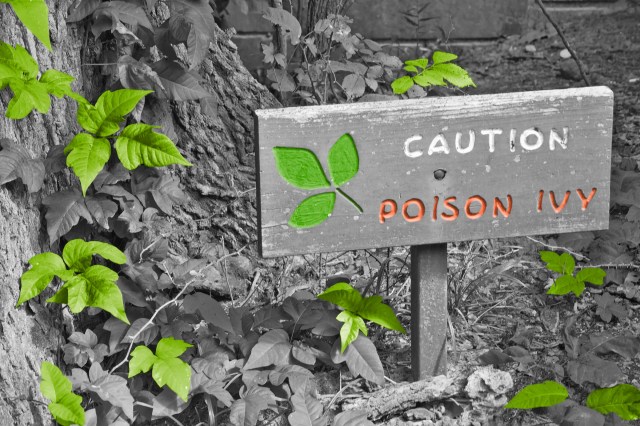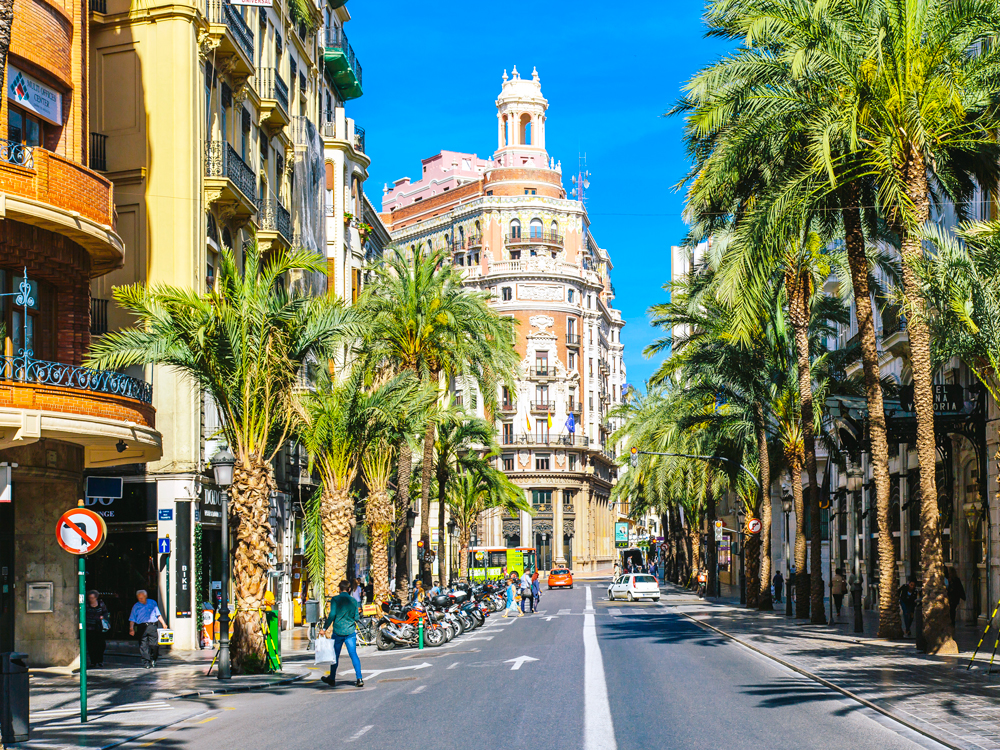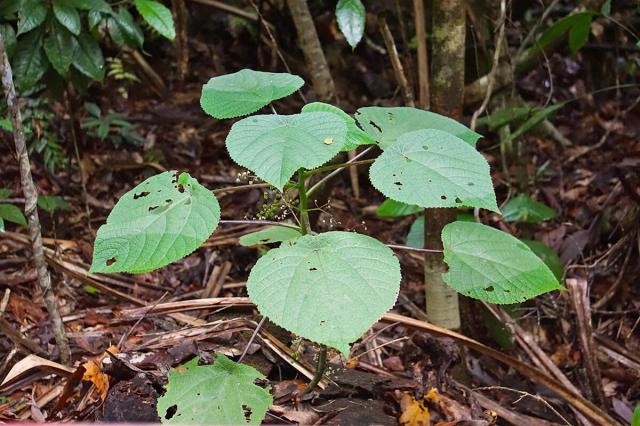
Gympie-Gympie
Often called the stinging tree or stinging bush, gympie-gympie is found in rainforest areas of Malaysia and Australia. The entire plant is covered in very fine, brittle hairs called trichomes that act like hypodermic needles, injecting toxins into the skin at the slightest of touches.
The pain is immediate, and in some cases it can leave victims suffering for weeks or even months. The gympie-gympie is kept in a locked glass case at the Alnwick Garden’s Poison Garden in the U.K., and its minders are well aware of its potency. John Knox, the lead tour guide at the Poison Garden, told the BBC that even the slightest touch of the plant feels like being “electrocuted and set on fire at the same time.”
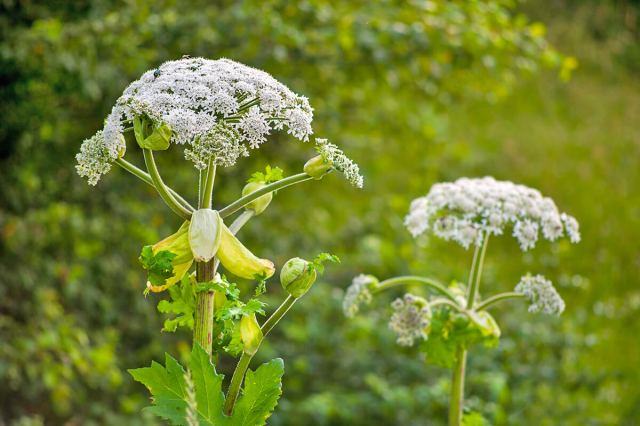
Giant Hogweed
In early stages of growth, giant hogweed can easily be confused with other plants such as cow parsley and common hogweed. But this highly invasive species, which can grow up to 16 feet tall, isn’t something you want in your back garden.
Giant hogweed contains a phototoxic sap that, when on the skin and exposed to light, can cause severe burns and, in some cases, even permanent scarring. Brushing against or breaking the plant releases the sap, making it difficult to get rid of the noxious weed. Always proceed with caution — or consider calling a professional — if you find this insidious plant in your garden.
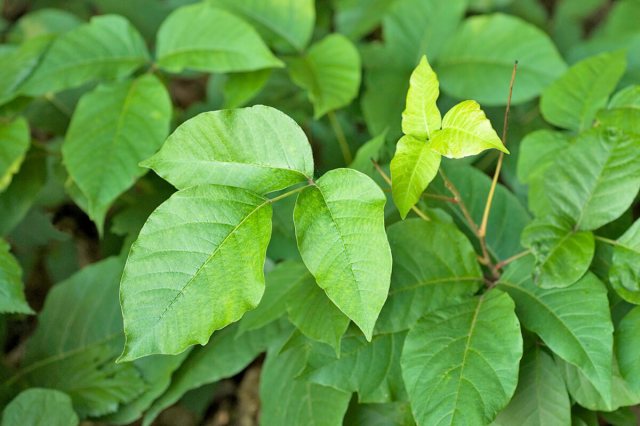
Poison Ivy
Poison ivy is probably the most infamous plant on this list. Native to Asia and North America, its rash-provoking abilities are widely known. The plant contains an oily resin called urushiol, which almost everyone on the planet is allergic to. Exposure to as little as 50 micrograms of urushiol — an amount smaller than a grain of salt — is enough to cause a red, itchy rash.
The reaction usually develops 12 to 48 hours after exposure and can last from two to three weeks. As if that wasn’t bad enough, the oil can linger and remain potent — sometimes for years — on virtually any surface until it’s washed off, meaning it’s possible to pick up the rash from oil stuck to clothing, pets, garden tools, and any other items that have come into contact with poison ivy.
More Interesting Reads
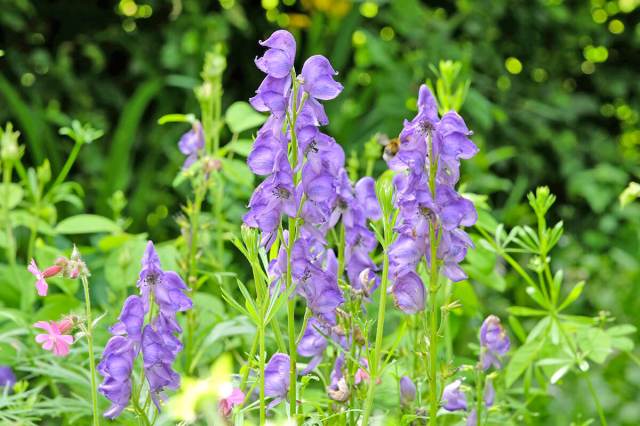
Wolfsbane
Wolfsbane goes by various names, including aconite, aconitum, monkshood, leopard’s bane, and devil’s helmet — but whatever you call it, it’s best not to touch it. Found primarily in mountainous parts of North America, Europe, and Asia, wolfsbane has a long history as a poison, with the oldest written records on its pernicious nature dating as far back as the 16th century.
Ingesting any part of the plant can be fatal, and it’s also a bad idea to touch it. You can easily absorb the poison through the skin, and that absorption can cause headaches, nausea, and heart palpitations. In extreme cases, touching the plant can also be fatal. In 2014, U.K. doctors were baffled by the death of a gardener at an estate in Hampshire before eventually placing the blame on the man’s contact with the deadly plant.
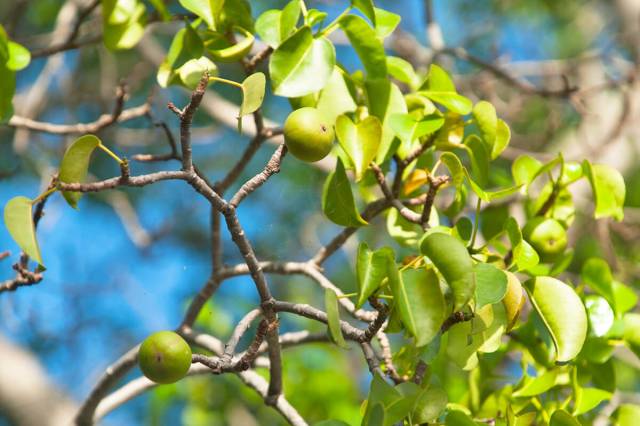
Manchineel Tree
The manchineel tree has the unnerving honor of being the world’s most dangerous tree, according to Guinness World Records. The tree is found in tropical regions including Florida, the Caribbean, and Central America, and nearly all parts of the plant, including its apple-like fruits, are poisonous.
The milky sap of the leaves and bark contains a chemical called phorbol, which generates a strong allergic skin reaction, causing severe chemical burns and blistering. Even sheltering under the tree while it’s raining is risky, as raindrops can collect phorbol and burn anyone standing below. It’s perhaps no surprise, then, that Carib Indians and other Indigenous peoples have long used manchineel sap to create poisonous arrows.

